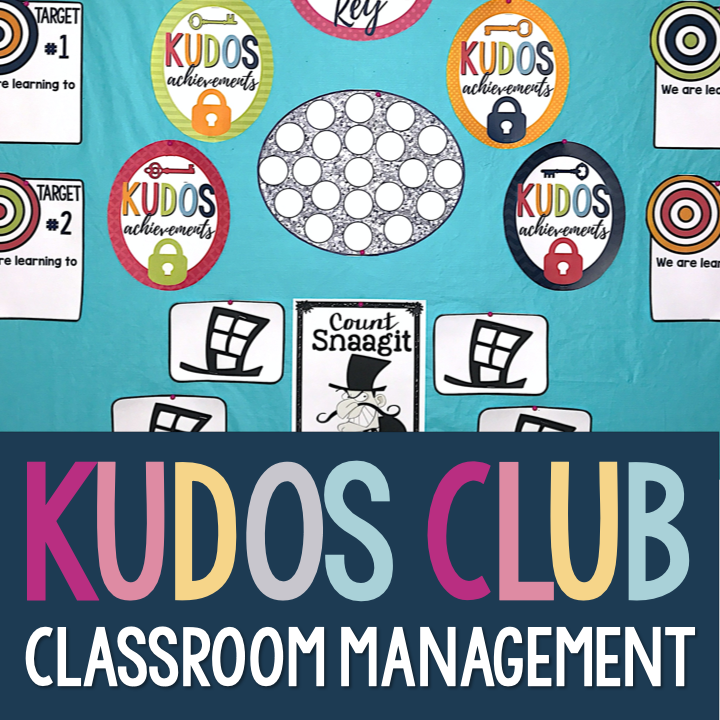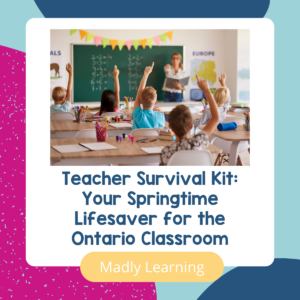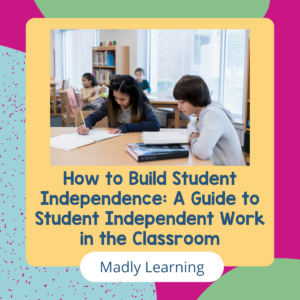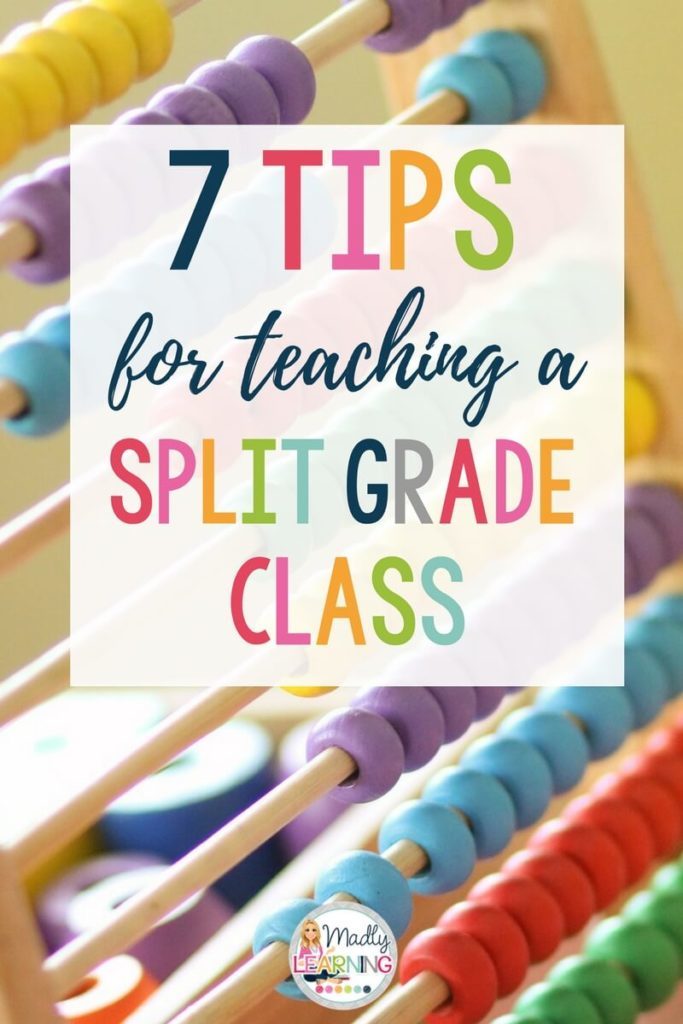
I love teaching a split-grade class. I know this may not be a popular opinion in teaching, but there it is. In reality, many of us teach split-grade classrooms, and although it has its challenges, it also has some amazing benefits.
- Built-in differentiated instruction.
- Lots of small group instruction.
- Two times the teaching team!
- Addressing standardized testing even earlier.
These are amazing benefits, but how can they be done? How do I teach a split? is a question I often read on Facebook forums.
My Philosophy for Split Grade Teaching:
Tip #1: Teacher as a Guide
I think it is important to understand how you will teach as a teacher. The old lecture style of teaching, where the teacher is the giver of information, is not the most effective way to teach today’s students.
Perhaps it was before the internet, but not today. Students have access to more information at their fingertips than ever before, and that information is instant.
However, the information is not always correct, or there is so much how does one person really sift through it to find the answer that they are looking for? As a teacher, there are times for direct instruction, and there are times for student inquiry.
Tip #2 Continuum of Learning
This is the reason
a split works so well. No one is ever doing the same thing. In any classroom today it is very rare that all students are working on the same criteria. However, in a straight grade, this is expected. The idea that “I sit in a grade 5 classroom so I do grade 5 things” is not true. In reality, it is rare that every student is in the same place simultaneously.
Understanding that the curriculum expectations are the stopping point but that the starting point is unknown is paramount to split-grade teaching. In math, for example, I teach place value at the beginning of the year to my 4/5 split class.
However, I also have students on individual education plans at a grade 3 level. So that is where I start, grade 3, learning. I introduce the ones and tens columns and have them do activities with these small numbers. Students proficient with this build confidence, and students at this level continue to build knowledge.
As the unit progresses, I increase students’ skill levels and expectations. Think of it as a train everyone can get on at the beginning, and you drop students off at their proficiency stops along the way. I don’t expect everyone to make the whole journey they can get off the train when they need to.
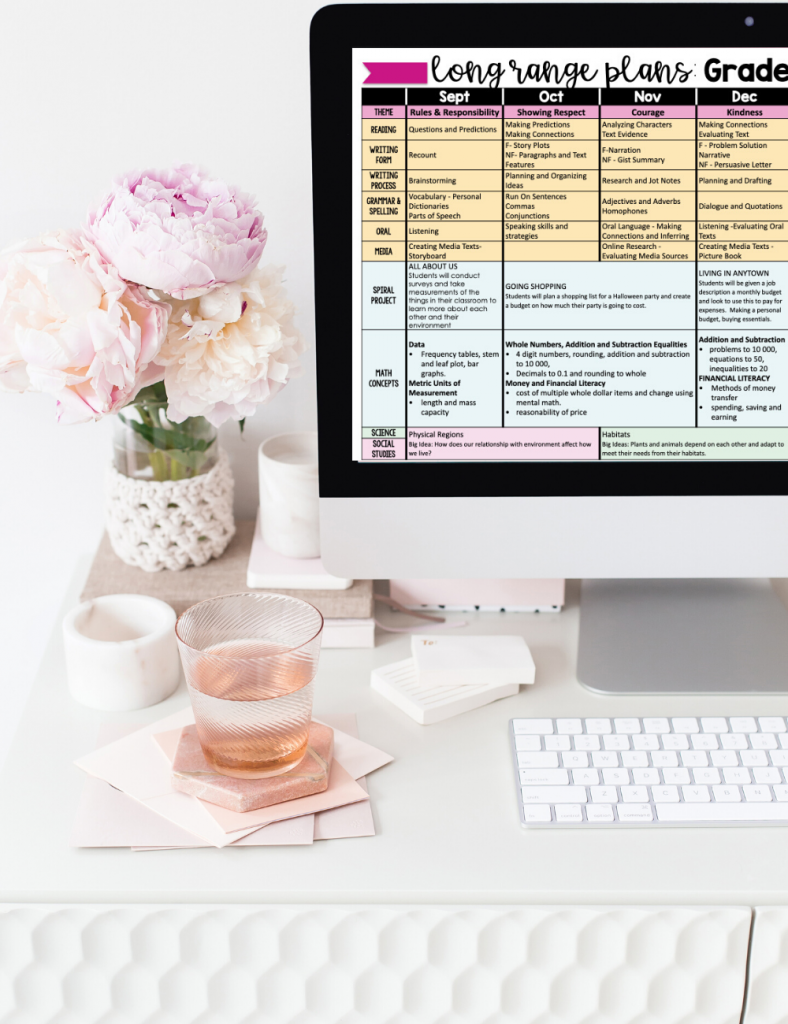
Tip #3 Combine
Looking at my
long-range plans you will notice that I combine most subjects. Additionally, although I do not combine science and social studies topics, I often find common lessons where the lesson is the same, but the work is different for the students. This frees up time and resources.

These will keep your whole year organized and you on track. This is essential to feeling in control and ready every month all year long.
Once you have all of your plans organized, keep it all together in these. Keep all of your resources organized with these handy binders. This way, you have all of your resources at hand without always printing off what you need.
Tip #4 Accommodate for Everyone
If every student works at their own pace, then the grade they sit in does not matter. Now, this does not mean that I make 29 different activities. I just make activities that can be accessed by the widest variety of students and I have different expectations for different students.
While I may expect one group of students to add specific details to an organizer, another group may be expected to add some basic details. The organizer is the same, but the process and content are different.
Along the same lines, I also ask some students to join me to get assistance in a guided group while I also ask for anyone who needs help to come and get it. Because I have a classroom where students are not stigmatized for needing or asking for help, I often get the kids who don’t need it but want it to come to join us.
This serves two purposes. One: these students help the struggling students, and two: they confuse the students as to the criteria under which I group them. The easiest way to start this is to get the ‘coolest kid’ in the classroom and offer to help him first. Students are social creatures, and understanding the social dynamic is important to set the culture of accommodations and assistance being okay.
Tip #5 Train for Independence
Ideally, you have a situation where you can build your class at the end of the year to ensure that the students that are placed in the split grade class are independent workers. That there is a reduction of students on IEPs, and other factors that respect the fact that
you are covering two grades while your colleagues are covering one.
This means there is no class building, and most of my students enter my room as junior students cannot work independently. Therefore I spend a great deal of time practicing. To help reinforce and support students in learning the classroom expectations, I use our
Kudos Club program.
If students are not doing what you expect, then chances are it is because they do not know what you really expect. They need practice. So we practice. They do it properly or they practice.
This is true for lining up, walking around the room, working at their desks, participating in a group discussion, and, most importantly, transitioning. We don’t just practice in September but all year long.
We review the expectations orally, demonstrate how and how not to do it, and rehearse it repetitively until we really understand it.
Tip #6 The Confusion of Choice
Kids can be mean, and they can also be sensitive.
I try to avoid the ‘stupid kid worksheet’ as much as possible. (I hate typing it like that, but that is how it feels to a student who is centred out to be different from different work).
If everyone is doing something different, then no one really notices that ‘Jamie’ has a different test than everyone else. This is so much easier in a split. My students sit in mixed grades and abilities groups from day one. I generally have about three to four different versions based on the ability for every test.
They all look the same, but the questions are different. I have yet to have someone notice.
Additionally, using Ignited Literacy as a core to my language program has aided in the confusion of choice. Every student is working on their task on their schedule. They rarely notice that during a conference with a student, I set different expectations for different students. With each student working on their
Stars, Goal groups are constantly changing, and everyone is at a different point in the continuum of learning.
Tip #7 Spread it Out
Ok, so not everything can be taught together. So I spread out the lesson. I start every science/social Studies period with a reflection. Tell me something that you know for sure, know a little, wonder about. (it is helpful at this point to also use strategies such as asking three before me or student helpers to answer quick questions)
At the end of this quick period, I share the learning goal of today’s lessons and give students a purpose for learning. I send one group back to work and then keep one group with me. Then halfway through the period, I switch.
Since the focus of these study topics is inquiry, students may be engaged in various self-directed tasks, making this time easier.
*Disclosure: I only recommend products I would use myself and all opinions expressed here are our own. This post may contain affiliate links that at no additional cost to you, I may earn a small commission.


 These will keep your whole year organized and you on track. This is essential to feeling in control and ready every month all year long.
These will keep your whole year organized and you on track. This is essential to feeling in control and ready every month all year long.